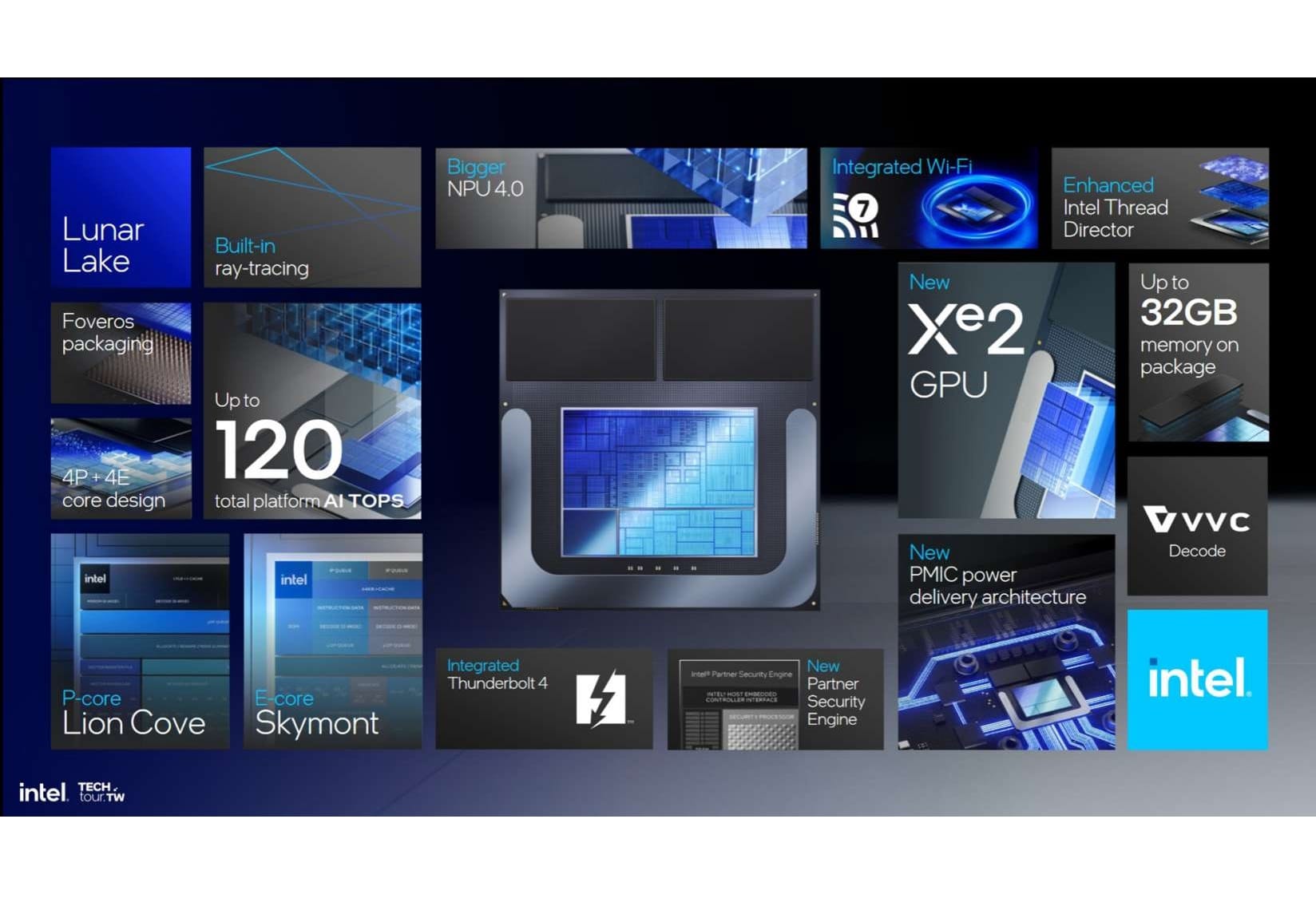Intel continues to build solutions based on the latest technologies and architectures to accelerate every component of the AI ecosystem: data centers, the cloud, the edge, and PCs. At Computex 2024, the company made a series of announcements highlighting the processing power, energy efficiency, and low total cost of ownership of their products across the whole AI ecosystem. With the Xeon 6 processors, Gaudi 2 and 3 accelerators, and the Lunar Lake PC processors, Intel looks to democratize access to top-of-the-line AI hardware and software platforms.
Intel introduced the Xeon 6 processors as an excellent option for companies looking to refresh their data centers to save space, capture cost savings, and meet sustainability goals. The Xeon 6 processor family was built with P-core (Performance-core) and E-core (Efficient-core) options to address these issues and offer flexible solutions to cover the most diverse use cases. Xeon 6 E-cores and P-cores share a compatible architecture, software stack, and hardware and software open ecosystem. The Intel Xeon 6 E-cores (code-named Sierra Forest) are available starting June 4. P-cores (code-named Granite Rapids), will launch next quarter. The technical details are available in the Xeon 6 fact sheet.
The Xeon 6 processors pair nicely with the Gaudi AI accelerators to provide solutions that seamlessly integrate into existing infrastructure. Gaudi accelerators are the only MLPerf-benchmarked alternative to Nvidia H100. This means that Intel's Gaudi architecture offers a significant price-performance advantage, as a standard eight-Gaudi 2 accelerator kit has a $65,000 list price or about a third of the cost of comparable competitor platforms. Likewise, an 8-Gaudi 3 accelerator standard AI kit is listed at $125,000, or two-thirds of what comparable alternatives cost.
Intel claims that Gaudi 3 will also have some training time and inferencing speeds over comparable NVIDIA H100 configurations, strengthening the accelerator's position as an affordable and performant alternative to dominant hardware. Intel will work closely with new partners Asus, Foxconn, Gigabyte, Inventec, Quanta, and Wistron, and existing ones Dell, Hewlett Packard Enterprise, Lenovo, and Supermicro to make the Gaudi systems broadly available.
Finally, as the reach of AI advances from the data center to the edge and even consumer devices, Intel has built on its experience in delivering industry-leading edge device experiences. In particular, the company is poised to deliver the best AI PC experience with the Lunar Lake processor family, shipping in Q3, 2024. Like the Xeon 6 processors, the Lunar Lake architecture will enable performance and energy efficiency with the Performance and Efficiency cores. Moreover, a fourth-generation Intel neural processing unit (NPU) with up to 48 tera-operations per second (TOPS) of AI performance. This is a four-fold increase in AI computing power over the previous generation. The Xe2 GPU includes a host of innovations and improvements, including the Xe Matrix Extension (XMX) for AI, which enables a second AI accelerator with up to 67 TOPS of performance.
Intel expects to deliver more than 40 million Core Ultra processors during 2024, as it readies itself to produce enough Lunar Lake processors to power over 80 AI PC designs from 20 OEMs.





Comments